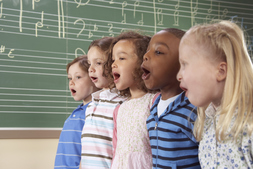|
I know what you're thinking... Ummm, duh! This whole series is about helping kids, so why is there a post about youth? Isn't this whole thing about kids? I'm not learning anything new here. Well, yes, sort of, not really. Bear with me... This week's post is all about learning from your kids (cue the collective groans). No seriously. I love learning from kids. Back when I worked in a high school, I knew more about pop culture than I ever had before (remember, when I was a kid, I was a pretty big nerd). Kids have so much to teach us. Their perspectives are fresh, they have boundless energy - which I wish I could bottle - and learning more about what they are facing as kids will help you determine how to help them develop their cultural competence skills.
So how do you learn more about your child's world? Try these below or come up with your own. If you try something that works well with your kids, leave a comment below so we can all learn from each other:
Next week is our last letter: Z! The end of the series is coming, but the blog posts continue! Don't forget to sign up for the newsletter so you get all of the tips, strategies, and information delivered right to your inbox. Enjoy and share!
1 Comment
 More LOVE. Less HATE. More LOVE. Less HATE. So, this post isn't for xenophobia, it's anti xenophobia, but that didn't look right in the title. Just so we're clear... What is xenophobia anyway? It's the fear and hatred of people who are different from you. Basically, you hold your people (whatever that means to you) in high esteem and significantly dislike and/or are fearful of people who are different from you. Most of the time, this word is used in terms of race, but in recent years we've seen it used more often in regards to religion (hello Islamophobia). But fill in any form of prejudice and it still applies: Socioeconomic Status (all poor people are lazy) Disability *Visible or Not Visible* (I don't want kids with ADHD in class with my child) Country of Origin (Mexicans are rapists - sound familiar?) Family Structure (All single mothers are poor and on welfare) Neighborhood/Region (A lot of the kids at that school are from across the river - something very real here in DC) All of these quotes don't necessarily sound like hate (except the rapist one - I mean, c'mon), but they are the precursors to hateful feelings and behaviors. When we read articles that talk about teenagers who engage in hateful behaviors (such as this... and this... and this...), it's important to remember that these behaviors did not come out of nowhere. These kids learned these feelings and attitudes from somewhere. More often than not, the message that these attitudes are ok are communicated inadvertently. But that doesn't make them any less powerful... So how do you raise a kid who is not xenophobic? A child, and eventual adult, who values and appreciates people who are different from them. Here are a few suggestions. There are always more options, but start with these - especially the first one. It's really important:
What will you try first? Let us know what you try in the comments below. And check back next week for letter Y. Better yet, sign up for the newsletter so you don't have to remember to check. Tips, strategies, & fun delivered right to your inbox every week. Share with others & enjoy! So originally, this was going to be 'w is for walk'. We will talk about walking here, but also about walking of the mind - or wandering. What exactly does that mean? Allowing yourself - and your kids - to really explore things and use their imagination. So let's talk about wandering - CCK style. Imagination and play are essential for children's development and they are also important components in fostering diversity awareness. Why would this be? Well, there are a number of reasons...
Play helps children to develop a number of skills. These include awareness of the self and others, how to interact with peers and adults, and problem-solving. All of these elements are important in helping children understand themselves as cultural beings as well as understanding others. In addition, play allows children to act out the things that they see around them and make sense of them. So how can you go about helping your child integrate imagination and wandering (both mentally and physically) into their diversity awareness? I'm glad you asked... Ask them questions - constantly: The basic questions about how their day was and what they did in school are great, but also make sure that you go deeper than that. Ask about the kids in their class. Ask about the people on the street that they see. Ask about their teachers. Ask about their friends. Nothing is off-limits; an important thing to model. Encourage them to ask questions: And answer them completely and honestly when they do. Go deeper than the most simple answers to their questions. Of course, it is vital to be developmentally appropriate - you don't want to go way over their heads. But don't make it seem as if the world is neat and tidy all the time. Plant seeds that will grow into deeper conversations as they get older. Go on an adventure walk: Take a walk around your neighborhood and point out everything. The trees, the people, the houses. Encourage your child to point things out as well. And then comment on the things that they see. Help them to understand why things look the way that they look. Someone planted a tree there. Those homes are condos and those are houses and there are many reasons people choose to live in one as opposed to the other. I see more people with brown skin on this street than this street. Here are some reasons why... Explore aspects of life that seem simple: When children are playing with toys, talk to them about the interactions. Sure, these things seem simple, but children are typically acting out what they see and experience in the world around them. Ask for examples of what they have seen. Ask about the race, gender, ethnicity, and socioeconomic status of the dolls and toys that they are playing with. Make statements that help them think more in-depth about their play. There are lots of ways to let your mind and body wander. To explore yourself and the world around you. The best thing about this is that you are never too old for this. It can be tweaked and tailored for any age you choose. Just get started - you may be surprised where this takes you... Leave a comment below and let us know what you tried and how it went. Be sure to check back next week for letter X and sign up for the newsletter for even more from Culturally Competent Kids!  Sing Loud & Proud! Sing Loud & Proud! Confession: This post is not just about vocals. It's actually about all kinds of music, but hey, gotta stick with the letter theme. V is for music does not work. What is it about music that makes us feel all the feels? It really is so incredibly powerful. There are some things that can be communicated through song that simply cannot be communicated with mere words. Whether it's the lyrics, the rhythm, the instrumentals, the vocals, music is one of the greatest art forms. Music is one of my favorite ways to introduce diversity into my house. On a recent Just For Fun Friday, I reviewed the Putumayo CD collection - it's all about music from all over the world (have a watch here). It's one of our favorites and we've been playing it for the kids since they were babies. I highly recommend checking them out and adding one of the CDs to your collection. What music do you tend to gravitate towards? Can you branch out to learn more about other cultures? This can be done in a variety of ways. You can explore different genres, different languages, or different countries. There are so many options that you may not have considered. For instance, this past February I went with my kids to a free concert of Chinese pop music at the Kennedy Center here in DC. They absolutely LOVED it and so did I. Chinese hip hop (like for real rap music - these dudes could flow) that you can dance to at one of America's finest performance arts institutions? The clash of cultures was astounding, fabulous, and FUN! Below is a list of places where you can get started to expand your musical palate. If none of these options appeal to you or your kids, remember, YouTube and Pandora are your friends.
Enjoy learning some new music! Let us know what you and your kids ended up loving by leaving a comment below. Be sure to check back next week for letter W and sign up for the newsletter for even more from Culturally Competent Kids!  Ok, so I realize that this post is a bit hypocritical. I often advocate getting to know things about diversity through the internet and other electronic options. This can be really helpful. But if the only way that you ever expose yourself and your kids to diversity, there is a piece missing. All of that great information won't really translate. Why not? Get ready for a crash course in Behavioral Theory... If you want the things you are teaching your child to manifest in their actual lives, you have to make it feel real. This means that wherever you want them to actually perform the behavior, it should be in an environment that is most similar to the place where you actually want the behavior to occur. For example, if you want a child to change their behavior in school, teaching them about it in the classroom is more likely to get results than teaching them about it at home. It helps prime a child's memory to do something when they are in the actual place. The same is true for cultural competence. We want to try and change a child's attitudes, but also their behaviors. It's hard to change those things when the only thing you are doing is watching diversity happen on a screen. It has to happen in a child's real life in order for that child to truly understand and internalize it. So how will you unplug and apply some of these things in the real world? How will you make it personal to your child? Below are some suggestions that you can do no matter where you are:
Check back next week for letter V! We're getting towards the end of the alphabet. Have you checked out the previous letters? What has been your favorite so far? Don't forget to sign up for the newsletter and you won't have to remember to check. Get the blog as well as Just For Fun Fridays and other great information delivered weekly to your inbox. Enjoy & share! |
AuthorDr. Sweeney is a licensed school psychologist and cultural competence expert. Here are her musings on life in a multicultural world. Archives
February 2017
CategoriesInterested in writing a guest blog post? Contact me for more information!
|
Proudly powered by Weebly


 RSS Feed
RSS Feed